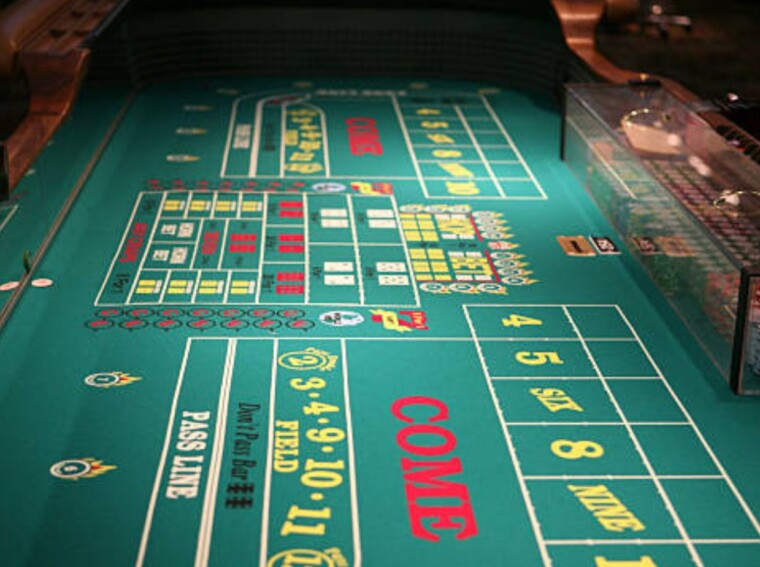Casinos have always crafted environments that aim squarely at your attention, with craps a perfect example: rapid turns, contagious energy, tactile rituals and suspenseful bursts all draw you in. Now imagine adding brainwave telemetry to that mix; with today’s consumer EEG headbands and research-grade systems, it’s possible to stream real-time indicators of focus and arousal, effectively turning the dice rail into a neuroergonomic experiment. You could opt in with a lightweight wearable, allowing the table to sense when engagement wanes and subtly adapt.
For example, pacing might tighten, prompts could soften and the crowd’s rhythm could be modulated without breaking the rules. This idea may sound futuristic, yet it sits remarkably close to reality. EEG engagement indices are validated in gaming and simulator studies, toolkits exist for developers and regulators already draft frameworks for biometric data. The technical “if” is fading; the real question is how to apply it without distorting the integrity of the game.
What your brainwaves can actually say at a dice table
EEG is not a mind-reader, and in fact, it measures rhythmic activity that aligns with general cognitive states. In gaming contexts, researchers often define engagement using a ratio: beta waves divided by the sum of alpha and theta waves. Higher values typically indicate more sustained attention. A 2025 study confirmed this ratio tracked closely with self-reported flow during gameplay, using commercial EEG headsets.
Devices such as Muse or Emotiv already translate these rhythms into metrics that apps and developers can use to distinguish between attentive and drifting moments. Picture this applied to craps: a newcomer might receive subtle coaching prompts when their focus dips or the table rail could display a faint visualization showing when players are overloaded versus comfortable. For you, that could mean the game adjusts just enough to keep the learning curve smooth while leaving the dice (and your decisions) untouched.
Closing the loop without breaking the game
Neurofeedback makes this even more interesting. It creates a loop in which you receive feedback about your own mental state, helping you adjust in real time. Recent reviews describe closed-loop EEG systems that use such feedback to improve performance, often by training alpha or beta ratios. At a craps table, this loop wouldn’t touch outcomes; dice remain dice. Instead, it could fine-tune pacing, adjust background sounds or trigger optional tutorials until engagement steadies.
If your brain is already buzzing with high beta activity, the table might dial down the audio intensity. If your engagement slips, a quick, skippable tip could surface. You’d stay in charge: nothing about the randomness, payouts or dealer conduct changes. What shifts is the environment, which becomes more responsive to your attention without crossing the line into manipulation. The heart of craps, its unpredictability, remains preserved.
Headsets, signals and the practical limits
So how would this actually look in practice? Today’s EEG hardware ranges from five-channel headbands aimed at meditation all the way up to thirty-two-channel systems with professional sampling rates. Some use saline sensors for quick setup, and many come with developer kits that deliver ready-made engagement estimates. Emotiv’s EPOC X, for instance, provides research-grade pipelines, while Muse headbands focus more on meditation and attention training. Academic systems can detect visual attention or use hybrid methods, but those often falter in the noisy, fast-paced environment of live play.
Craps demands steady, reliable state estimates over seconds, not precise command control. You’d also have to consider comfort under hats, hair interference and hygiene at crowded tables. Casinos would need to manage charging docks, disposable sensor liners and signal noise from neon lights and pulsing audio. Workarounds exist, but they’re crucial if neuro-enabled craps is to feel natural rather than gimmicky.
Consent, cameras and the shifting rulebook
The promise of neuro-casino design runs up against sensitive realities. Casinos already experiment with biometric surveillance, including facial recognition for security and self-exclusion enforcement. Past breaches of biometric data highlight how delicate such information is. In Europe and the UK, EEG-derived data qualifies as special-category information under GDPR, demanding explicit and revocable consent.
A regulatory update in 2025 even strengthened rules for biometric-driven marketing personalization, signaling that gambling technology will face sharper scrutiny. Ethicists stress transparency, local storage and strict limits on data reuse. For you, that should mean if you opt in, your data never leaves the device unless you authorize it and if you walk away, the information walks with you. No casino should tie access, payouts or surveillance to a headset. Neuro-opt-in gameplay needs to remain just that: voluntary, reversible and free of hidden hooks.
A responsible roadmap to e-Casino futures
The way forward lies in structured, transparent pilots. Imagine a group of volunteers testing EEG-assisted craps with lightweight headbands. Developers could experiment with adaptive pacing or environmental adjustments keyed to validated engagement ratios. Researchers might study whether those tweaks heighten enjoyment or ease frustration without distracting from the core dice ritual. Operators could analyze anonymized, on-device summaries rather than raw brain data, protecting individual privacy.
Regulators would oversee the process, refining consent flows and checking alignment with responsible gambling frameworks. For you as a player, the result could be a craps table that senses when you’re deeply immersed or drifting and responds with just enough flexibility to keep you in the flow. The dice still tumble freely, but the rhythm around them becomes adaptive. Done responsibly, this could make the game smarter, more respectful of your attention and more engaging without ever crossing into manipulation.

